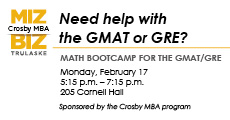The University of Missouri has come a long way since its founding in 1839. From 11 a.m. to 1 p.m. on Feb. 11 in the Student Center, the MU community will celebrate its remarkable 175-year history.
Featured will be short talks by MU Chancellor R. Bowen Loftin, along with Mini Mizzou, Golden Girls appearances, talks by student leaders and a birthday cake.
The university has grown from a single building called Academic Hall on 44 acres to 345 buildings on the main campus. Student enrollment has increased from a few dozen in the early years to 34,658 for fall 2013. Today the university is a $2.1 billion globally competitive higher education institution.
Where We Are From
MU was founded in 1839 thanks in large part to the efforts of then-Missouri lawmaker James S. Rollins, who saw the need for higher education in central Missouri.
During its early decades, MU grew slowly and enrollment was sparse. Its campus, moreover, looked more like a collection of country schoolhouses than a state university.
Two events strengthened its financial foundation: In the late 1860s, Rollins, then a state representative, drafted several measures to create revenue for MU, and the university achieved land-grant status.
The Morrill Act, passed in 1862, was a federal program designed to bulk up American higher education. The act gave federal land or the proceeds of federal land sales to universities for the creation of colleges teaching agricultural and mechanic arts.
Upon receiving land-grant status in 1870, MU moved to open the College of Agriculture and Mechanic Arts, now the College of Agriculture, Food and Natural Resources.
Between 1870 and 1910, American higher education hit its stride. Enrollment jumped, and benefactors fat with cash from the industrial age enabled the founding and expansion of hundreds of degree-granting institutions.
But expansion also shed an unbecoming light on the lack of academic standards among U.S. colleges and universities. In response, 14 higher education institutions’ presidents formed the Association of American Universities (AAU) in 1900. Association membership was by invitation only and based on the quality of the university’s research, faculty, and undergraduate and graduate education. Charter members included Johns Hopkins, Harvard, Cornell, Yale, Princeton and Stanford.
Granted membership in 1908, the University of Missouri is one of only 34 public universities in the U.S. with AAU status.
The Research We Do
MU is not only a public land-grant university dedicated to a statewide mission of service. It is also a research titan with a global presence. In fiscal 2012, the university reported $239.8 million in research expenditures to the National Science Foundation.
Since fiscal 2008, the campus has filed 365 U.S. patents and signed 227 options and leases for new technologies. To date, companies licensing products invented by MU faculty have earned $1 billion in sales revenue.
Research is wide-ranging. Fu-hung Hsieh, a biological engineering and food science professor, and Harold Huff, BS Ag ’74, MS ’81, head of MU’s Food Engineering Lab, labored a decade to invent a chicken alternative that hit the marketplace in June 2012.
Months later, the Beyond Meat factory that produces the product opened in Columbia, creating Missouri jobs.
In February 2013, Professor M. Frederick Hawthorne published in the online journal Proceedings of the Natural Academy of Sciences his research on a radiation therapy that causes cancer remission in mice without discernible side effects.
Plans are to begin clinical trials on human patients once funding is obtained and infrastructure built. If all goes as planned, the therapy could be available by 2018, said Hawthorne, a National Academy of Sciences member.
Hawthorne credits the campus’s interdisciplinary approach, the strength of its biomedicine department and the MU Research Reactor for the therapy’s development. Indeed the reactor, opened in 1966, has been a boon to MU innovation.
Perhaps surprisingly, MU research has benefited from the university joining the Southeastern Conference in 2012.
Faculty are developing research relationships with their counterparts at the 13 other SEC universities. Also, given the broader national stage the SEC offers MU sports, a bounty of people could be motivated to learn more about what Mizzou does academically. Higher visibility might increase donor participation, as well.
Who We Are
To create a more accepting and racially diverse campus, MU launched a diversity initiative two decades ago and in 2006 formed the Chancellor’s Diversity Initiative. One year later, MU started the Missouri College Advising Corps, which sends recent graduates into state high schools to help students better understand the nuts and bolts of applying to and succeeding in higher education.
Many high school students counseled became first-generation college freshmen at MU and other universities. Students of various ethnicities also spend hundreds of hours in schools as mentors of underrepresented minority students.
“Our campus culture is respectful and inclusive,” says Chief Diversity Officer Noor Azizan-Gardner. “We encourage meaningful diversity, which happens when people meet and engage with one another. It is really exciting to create an atmosphere where there is open engagement.”
This article was adapted from the MIZZOU magazine feature story “The Making of a University,” which appeared in the Winter 2014 issue.


